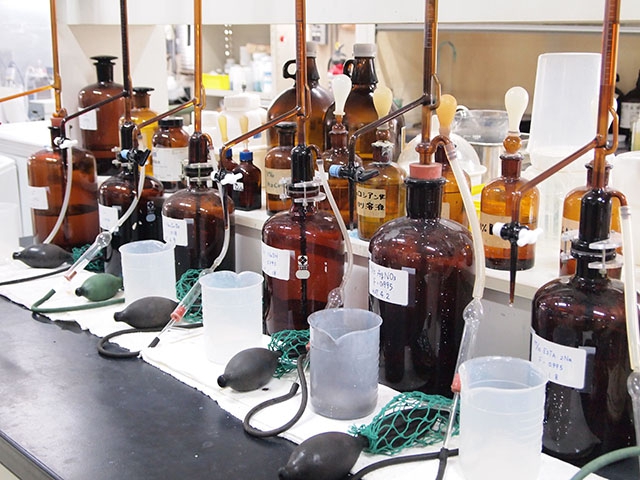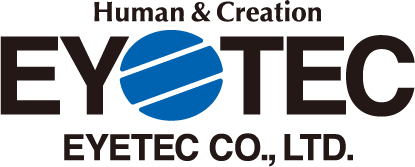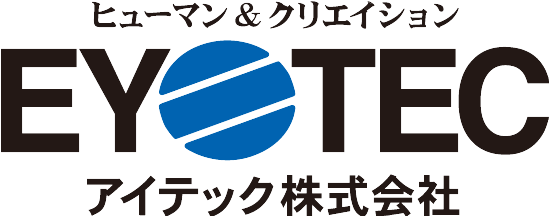1. Development of surface treatment technology to apply nickel to titanium material
Around 1983, we received a request from an assembly manufacturer that did not have equipment for pure titanium spectacle frames, asking if it was possible to cover the titanium surface with nickel by plating, in order to use a conventional brazing machine for brazing. bottom. At that time, special spot welding and brazing machines for pure titanium were expensive, and manufacturers with them were limited. Therefore, our company decided to develop a new method of attaching nickel to the surface of titanium material by wet plating.
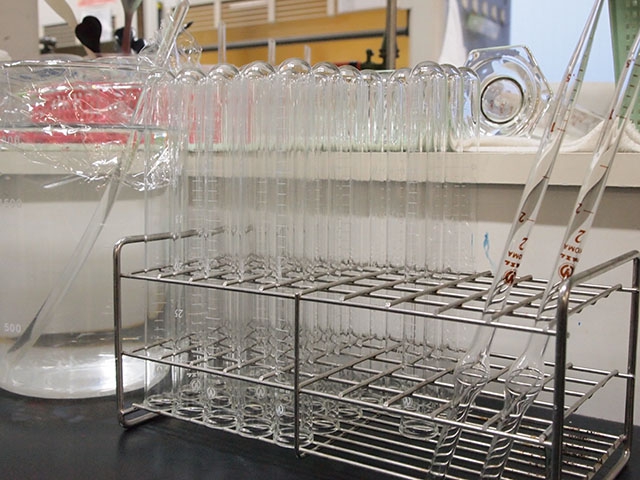
2. Nickel plating peels off! a problem occured
At first, after removing the oxide film on the titanium surface by chemical treatment, nickel plating with low stress was applied. Then, in order to improve adhesion, we applied heat diffusion treatment and added nickel plating to a thickness of 15 to 20 μm. By doing so, it became possible for assembly manufacturers to braze, polish, and assemble nickel-plated titanium materials.
However, there was a problem that the nickel plating layer came off due to inappropriate brazing conditions and excessive polishing. After repeated discussions with the assembler side, we reduced the polishing process after nickel plating by removing scratches from the surface of the titanium material as much as possible and making it smooth before nickel plating, and then buffing it. In addition, technical guidance was provided to ensure that the soldering heating temperature does not exceed the melting temperature of nickel, and the above problems were resolved in 1984.
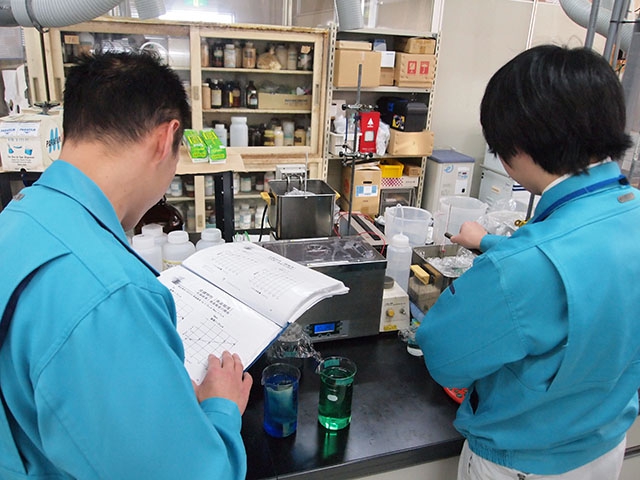
3. Birth of new technology "Nickel Plating"
This nickel plating was not developed as a decorative surface treatment method, but as a bonding method. It was developed and used at about the same time as the method of directly joining pure titanium by brazing with a small spot welder. In the industry, in order to avoid confusion with surface treatment as the final decorative precious metal plating, the "nickel plating method" is used in contrast to the "spot method" (direct brazing of titanium materials using a small spot welder) as a joining method. (brazing after thick nickel plating by existing brazing machine).
This method of nickel plating is also called the "thickness method," and it continues to this day with improvements.
In addition, assemblers for the domestic market and specialist assemblers of eyeglass frames for export, who do not have equipment for titanium eyeglass frames, use this method to connect the rim line (the frame part surrounding the lens) and the temple (from the lens to the temple). , the part that hangs over the ear) is made of titanium, making it possible to ship titanium eyeglass frames.
Eyeglass frames manufactured by these methods are called "mixed titanium frames", and while pure titanium eyeglass frames were extremely expensive at the time of factory shipment, we made it possible to manufacture them at less than half the price.
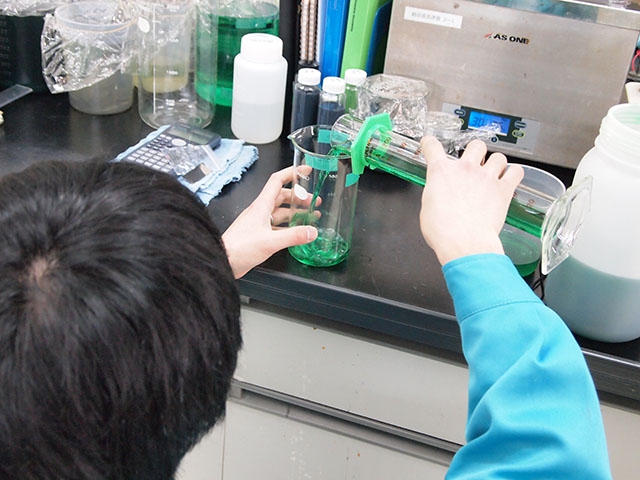
4. Giving gold plating to titanium material, to the birth of "direct mounting type"
From 1985, direct plating of gold onto titanium material was developed. Before that, thick nickel-based plating was used, but due to potential difference corrosion between titanium and nickel, the plating swelled, cracked, and rusted after long-term use. We proceeded with research to see if we could plate titanium materials without using nickel, which has a large potential difference.
Through testing various metal platings, we have found that titanium materials cannot be adhered to any plating other than nickel or gold. Therefore, as a method of directly applying gold plating, after applying gold strike plating to titanium by wet plating, heat treatment is performed in the atmosphere in an oven to generate a thermal diffusion layer of titanium and gold to increase adhesion strength. It is based on the principle of plating precious metals such as gold and palladium on top of it using the conventional wet plating method.
However, during development, various problems arose, such as the finish being dull due to lack of luster, and the temple peeling off when the temple was bent. bottom. Later this method was called "direct mounting".
Since then, various titanium alloys such as beta-titanium have been used for spectacle frames, and the adhesiveness and luster of each material vary, so we have been developing prescriptions that match each material.
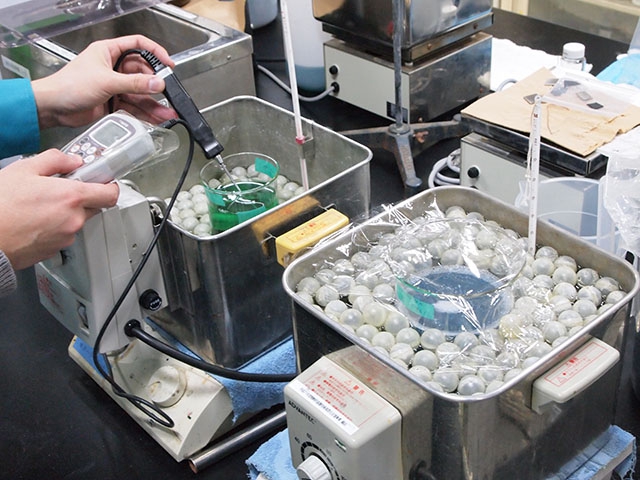
5. Development of plating technology for titanium materials suitable for industrial and decorative purposes
After that, in 1987, a nickel plating method called the “thin method” or the “post-peeling method” was developed. In this method, titanium parts are first plated with 2 to 3 μm matte nickel, and after heat diffusion treatment, the parts are brazed. After that, the nickel plating is removed by chemical treatment at the plating factory, and then polished and assembled at the assembly manufacturer. Finally, the titanium surface was directly nickel-plated again, followed by the same thermal diffusion treatment, followed by normal wet plating.
In this way, nickel plating on titanium materials has become an industrial surface treatment for joining titanium materials by the existing brazing method, and at the same time, it has come to be used as a base plating for decorative surface treatment. It contributed greatly to the spread and development of eyeglass frames and titanium materials.
- References
Fukui Prefectural University Graduate School Economics and Business Administration Economic Research Doctoral Course Mr. Jun Yamamoto's 2013 Doctoral Thesis "History of Technological Innovation in the Development of Titanium Eyeglass Frames in the Fukui Production Area" Chapter 5 Technology Related to Titanium Eyeglass Frame Manufacturing development
